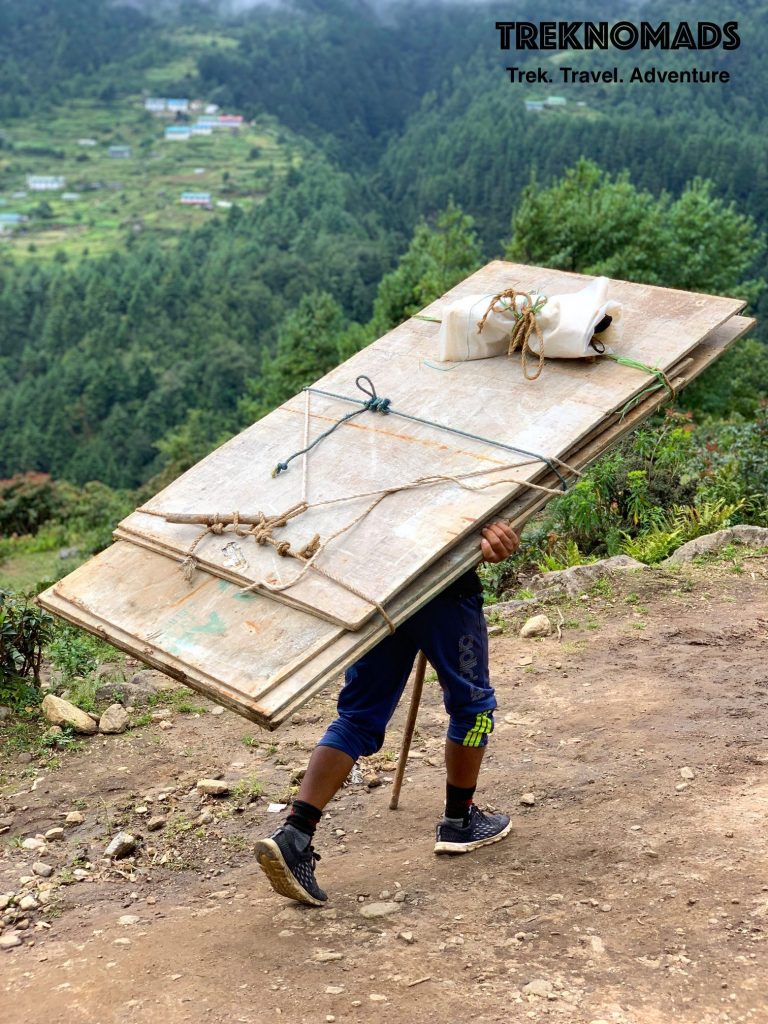
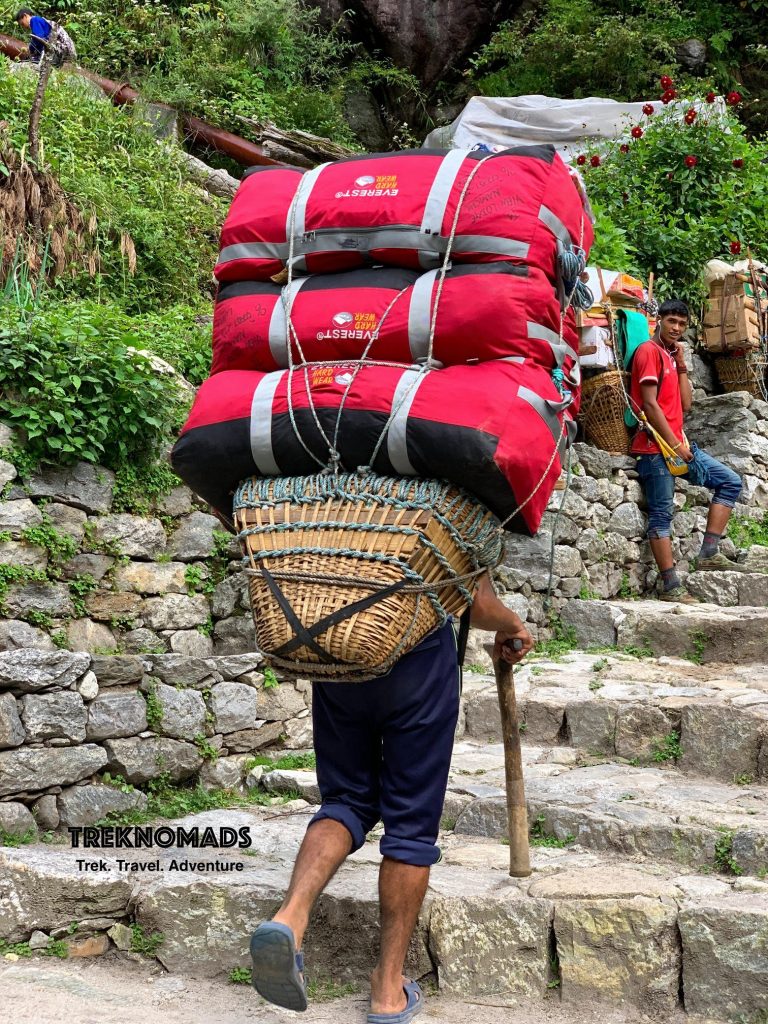



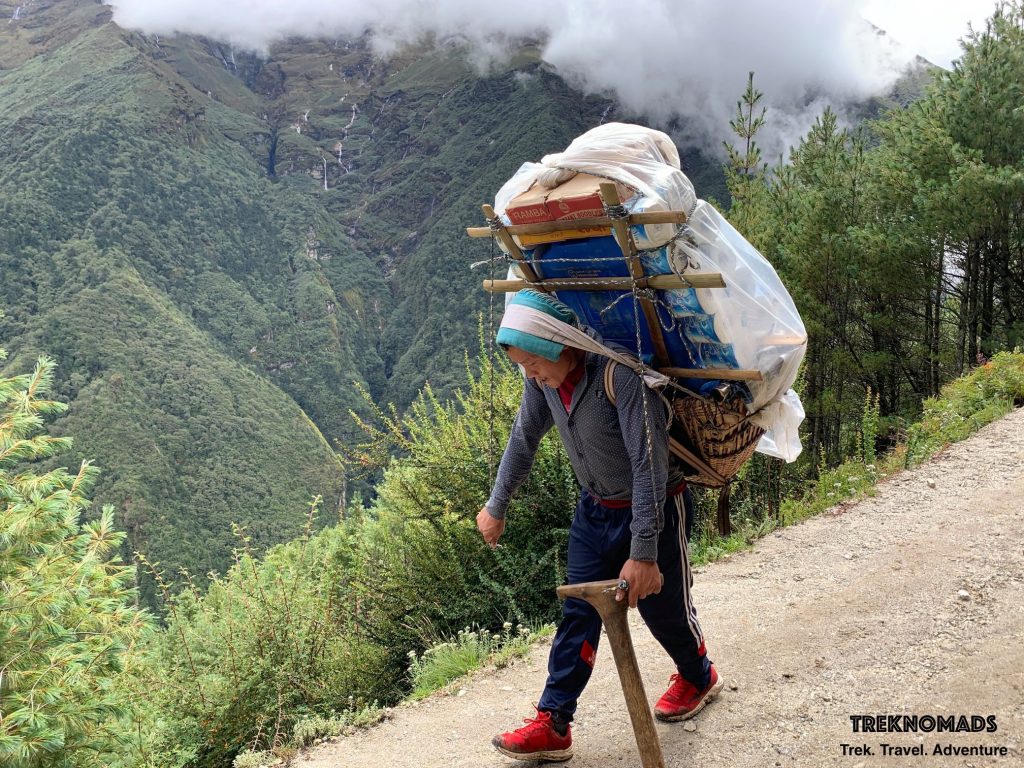


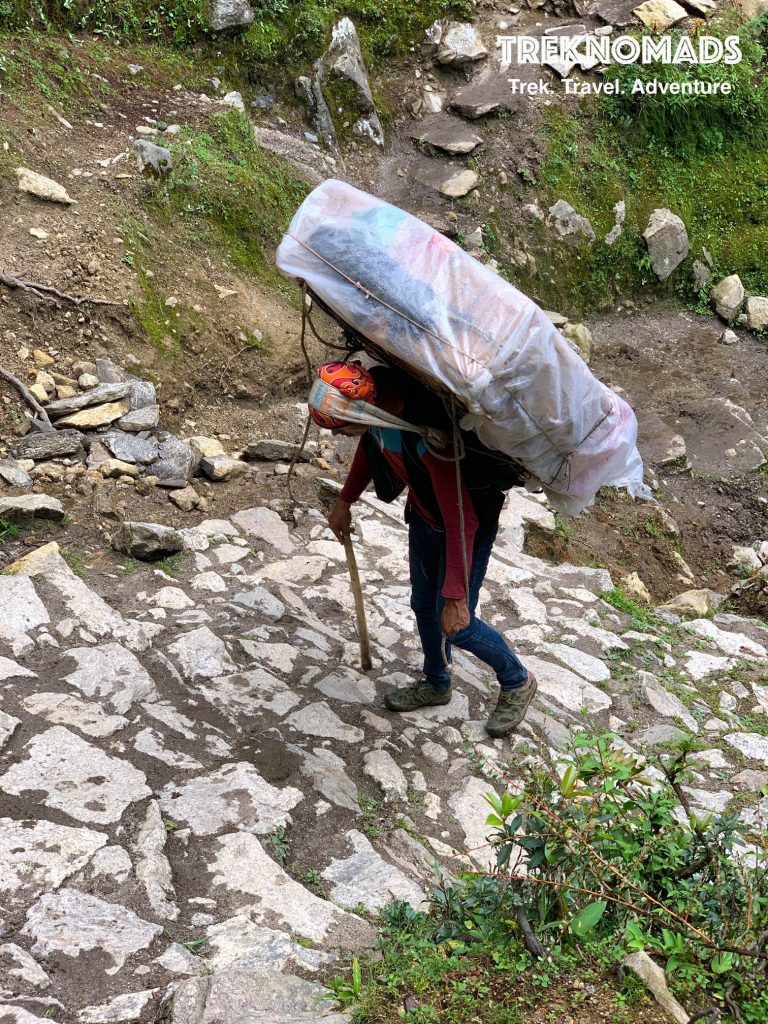
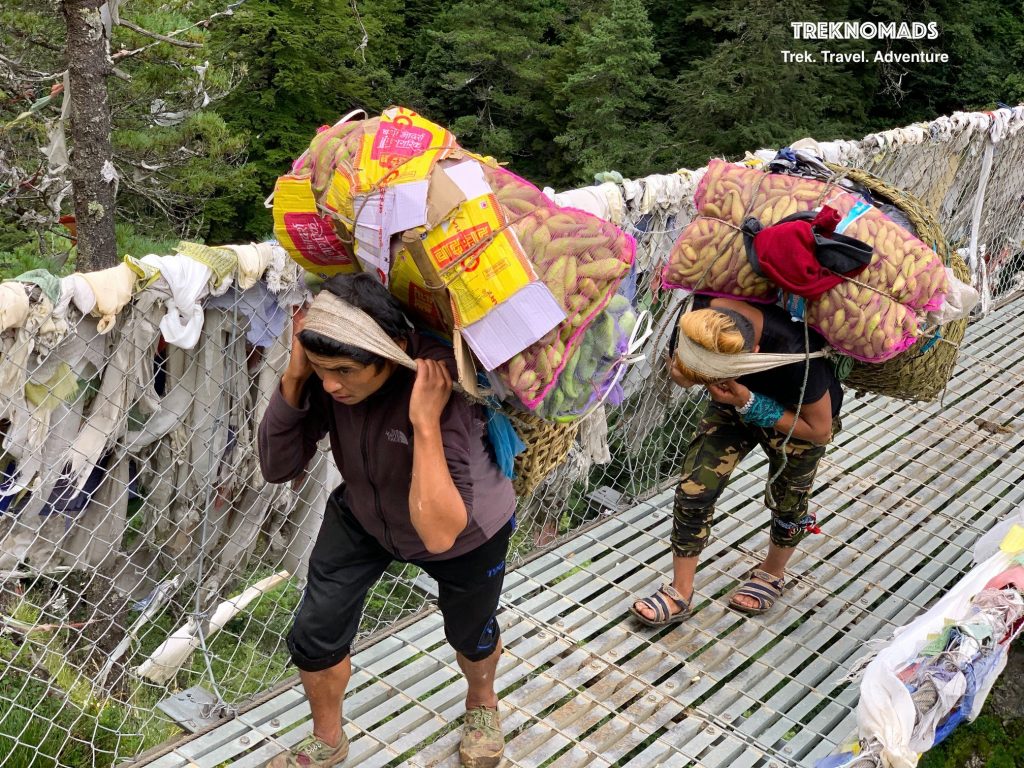

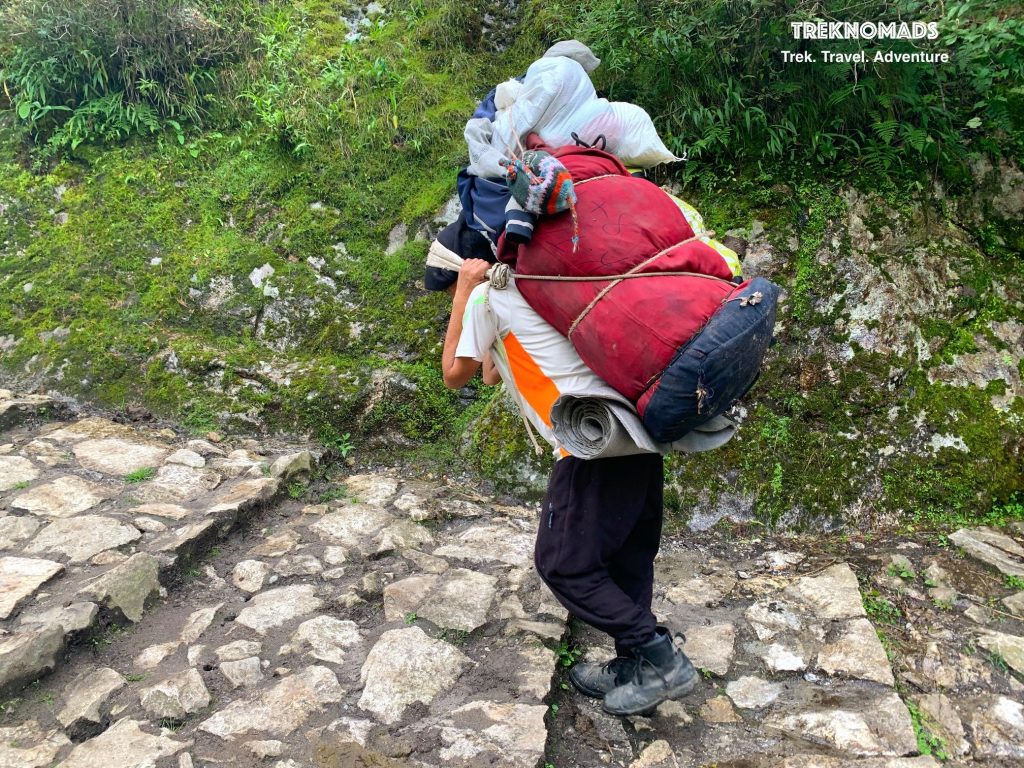

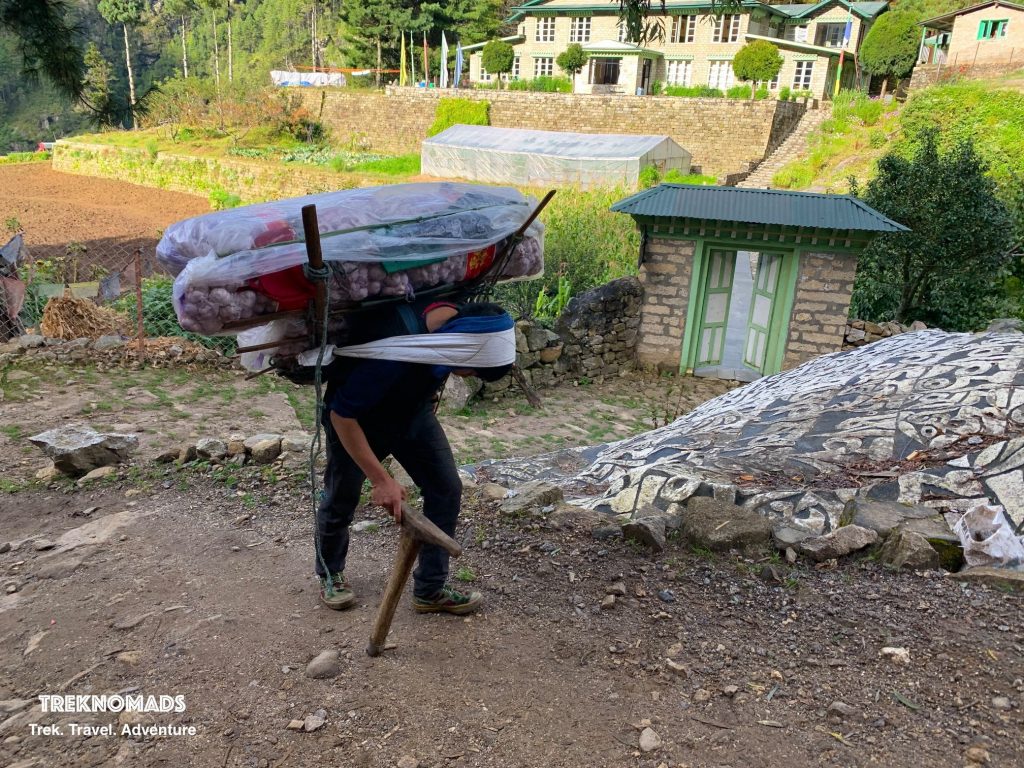
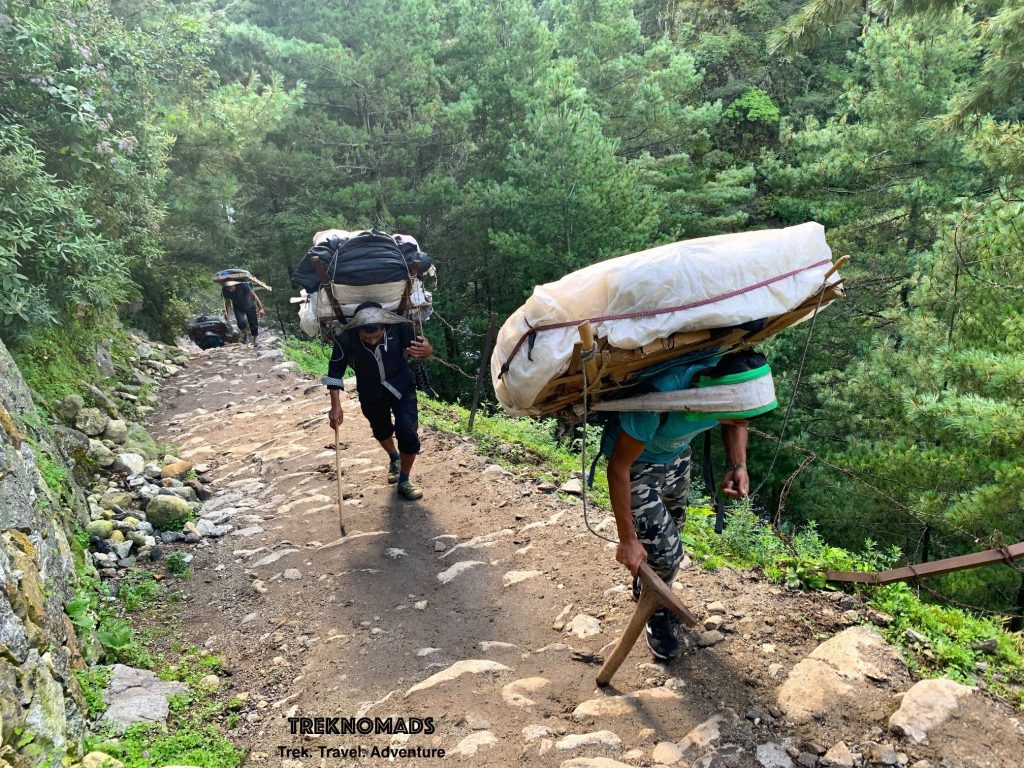
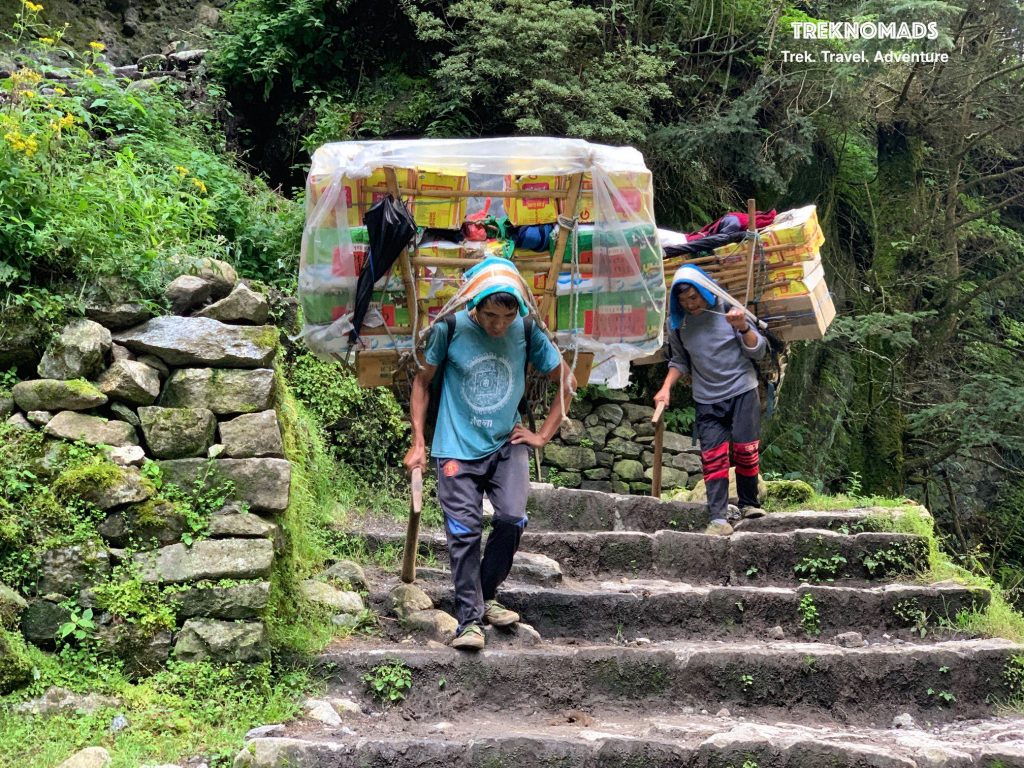



Tipping System in Nepal
As of what we understand, there is no tipping system in place as compared to rules in other countries where porters MUST be given a certain amount of tip for the work they’ve done by every trekker. When trekking with us, we strongly follow the unsaid rule of tipping well. While the amount to be tipped is at your discretion, we always encourage our trekkers to tip more if they’re happy with the porter’s service. To give you an example, you can tip from anywhere between Rs 100 – 500 per day (depending on your comfort).
Tipping Etiquette
There are a few things that you need to keep in mind while tipping the porters or guides in Nepal.
Handing over the money
Always hand over the money with your right hand, as using your left hand for this is considered to be rude in Nepal.
Tip Discreetly
It’s always better to tip your porter at the end of the trek, in which case, we suggest that you use an envelope, this will not only make them feel good about the tip, it will also give them a sense of respect. If you wish to tip smaller amounts, it’s always better to tip without creating a scene or saying it out loud.
Tipping doesn’t necessarily mean money
During your trek, it’s always a good sense to tip porters with food such as chocolates, energy bars, dry fruits, water, etc. After your trek, you can always leave behind your gear, clothes, shoes etc. that can be extremely helpful to these porters as they would never be able to invest in these otherwise.
The unsaid rule of weight
On our treks, we’ve seen porters more than 80 kilos of weight up and down the trail. While there is no rule in Nepal to check how much each porter can carry, it is always advised that as trekkers, you do not overburden them with heavy luggage. You can even do a ratio of one porter for two trekkers to ensure that they are not carrying too much weight.
The one thing we need to learn from them is regardless of how hard and risky their life is, they are always humble and extremely polite. Most of them talk to you, others smile, make sure you return the favor back to these super humans as well.
